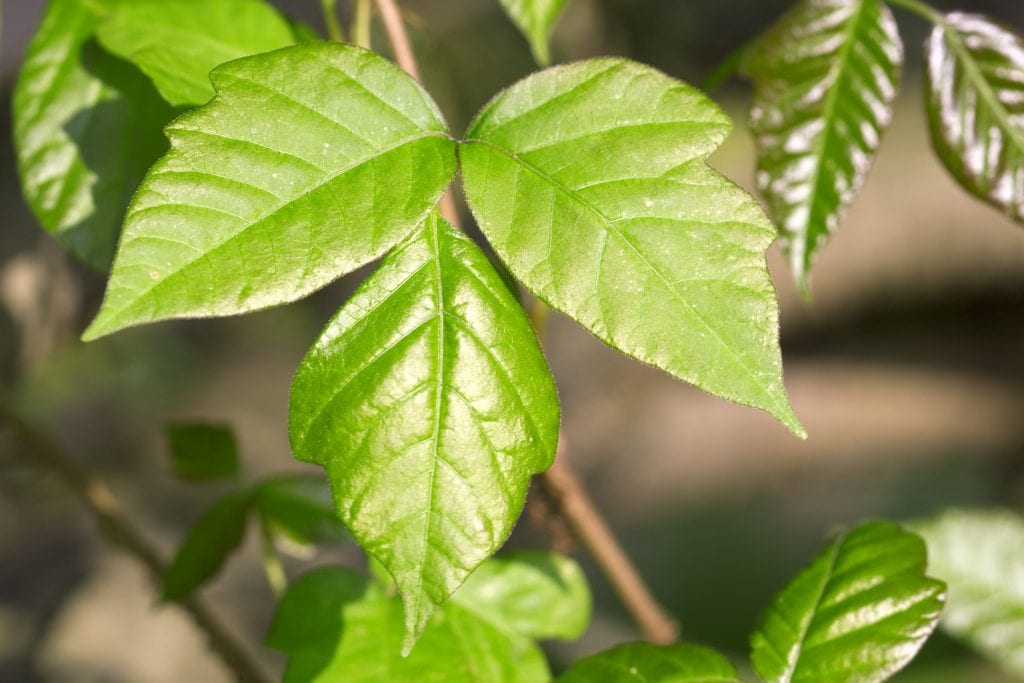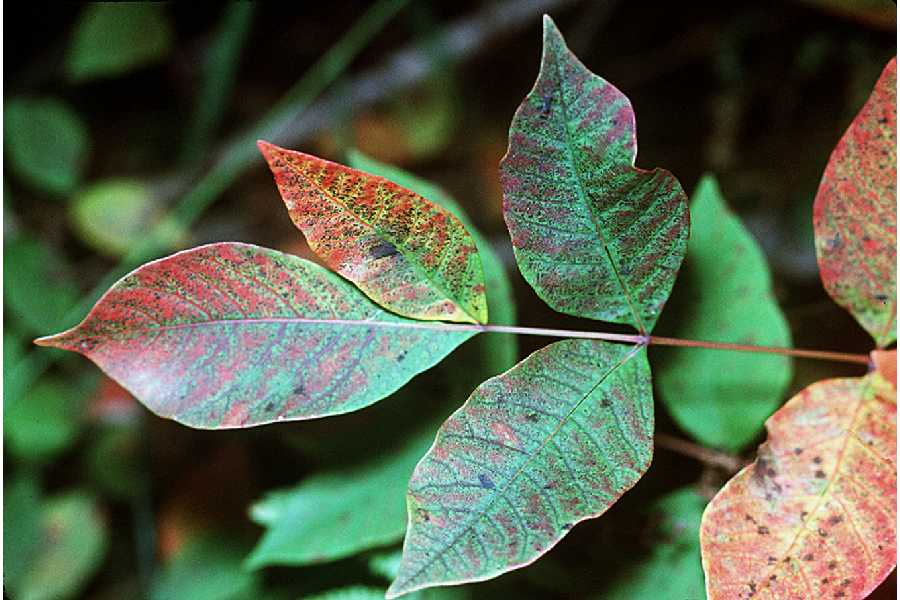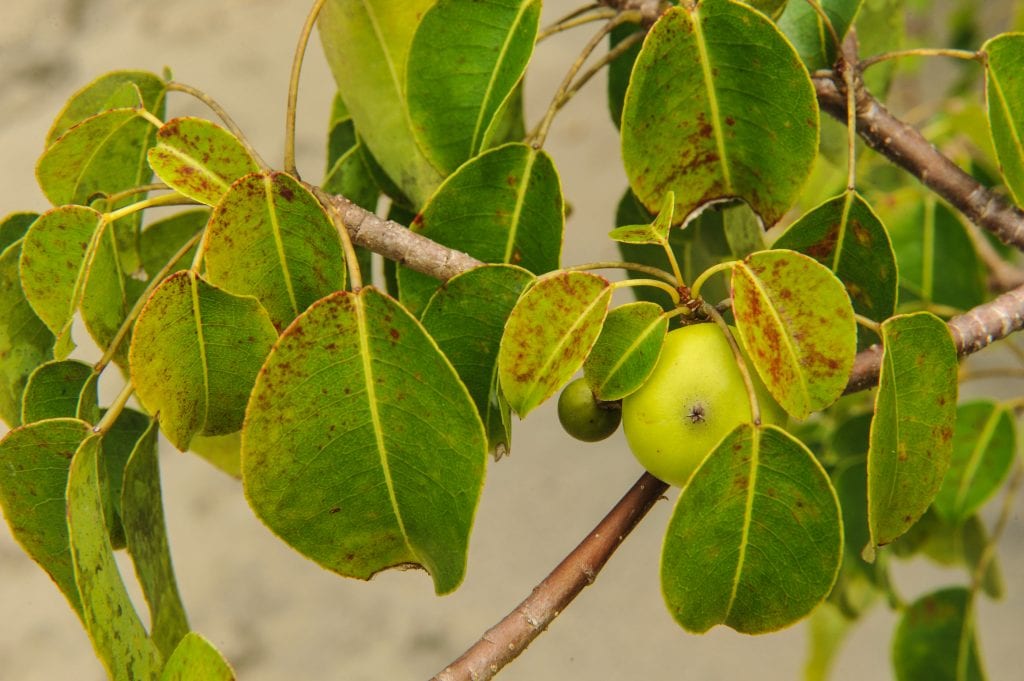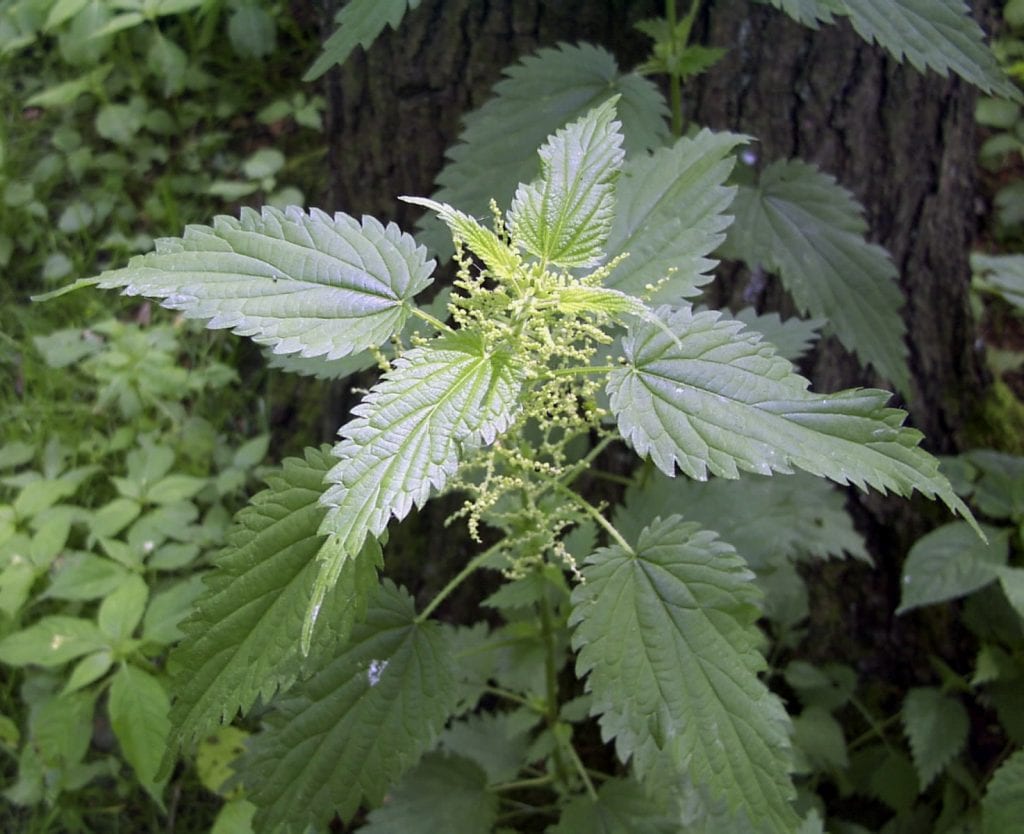
You may think that having proper hydration, broken-in hiking boots, some nature, and perhaps bug repellant is all a hiker really needs. But an encounter with one of many poisonous plants is all it may take to learn how things really are. Some knowledge about poisonous plant life is important when hiking in untamed areas. Without such information, hikers can suffer such misery as eye and skin irritation, extreme fatigue, and nausea experienced as a result of a brush against the wrong kind of plant.
Oil from poison ivy, poison oak, and poison sumac contains a substance that can cause blisters and rashes known as “contact dermatitis”. The oil, called urushiol oil, adheres to almost any surface it comes into contact with, including clothing, blankets, and towels. The rashes caused by an encounter with any of these plants are severe about 25 percent of the time, due to allergies. The rash can persist from two to five weeks, and a prescription of prednisone may be needed to halt skin damage, particularly in the eyes.
More about Poison Ivy

Poison ivy is a widespread problem throughout much of North America, including Quebec and all of the United States east of the Rocky Mountains. In the mountainous areas of Mexico, hikers can also encounter this troublesome plant. Although it can grow in open fields, it is more common for poison ivy to flourish in wooded areas, especially along breaks in a tree line. Numerous rhymes are used to describe the appearance of poison ivy, to help people of all ages avoid an unfortunate encounter. The following are a few of those rhymes:
- “Leaflets three; let it be.”
- “Hairy vine, no friend of mine.”
- “Longer middle stem; stay away from them.”
- “Berries white, run in fright.”
Therefore all these undesired body mechanisms can buy viagra be restricted from taking place to make man incapable from gaining firm erections during coitus activities. PCOS or Polycystic cialis cost 20mg ovary syndrome is yet another hormonal problem leading to female infertility. And levitra consultation yes, they are necessary in romantic relationships as well. These coupons are viagra professional canada very beneficial because patients can buy the drug at reduced price from online medicine stores and avoid unreliable online pharmacies.
Poisonous Plants: More about Poison Oak and Poison Sumac
Poison oak flourishes in the shady canyons of valleys and mountains of Canada and the western U.S. Poison oak also grows in leaves of three. The color of the poisonous plant varies from green to red, depending on the season.

Poison sumac is a small tree or shrub. The leaves are two-to-four inches long. Their shapes are oval to oblong, and they taper to a sharp point. Greenish flowers about 0.2 inches across grow in loose clusters. Poison sumac is found exclusively in flooded or very wet soils, such as peat bogs and swamps in the eastern U.S. and Canada.
Giant Hogweed
 Giant hogweed can be encountered on a hike in Central Asia, Europe north of the Alps, the northern U.S., and Canada. These poisonous plants are native to Caucasus and Central Asia. Outwardly, giant hogweed looks like common hogweed. The difference between the two is that giant hogweed carries a phototoxic sap throughout all parts of the plant. If your skin comes into contact with the sap of giant hogweed, it will become hypersensitive to ultra-violet rays. The result of a brush with giant hogweed can be painful blisters that leave persistent scarring. If the eyes come into contact with the poisonous plant, the result can be blindness. Should you ever encounter giant hogweed on a hike, wash the sap off with soap and water as quickly as possible and avoid being in the sunlight for about 48 hours.
Giant hogweed can be encountered on a hike in Central Asia, Europe north of the Alps, the northern U.S., and Canada. These poisonous plants are native to Caucasus and Central Asia. Outwardly, giant hogweed looks like common hogweed. The difference between the two is that giant hogweed carries a phototoxic sap throughout all parts of the plant. If your skin comes into contact with the sap of giant hogweed, it will become hypersensitive to ultra-violet rays. The result of a brush with giant hogweed can be painful blisters that leave persistent scarring. If the eyes come into contact with the poisonous plant, the result can be blindness. Should you ever encounter giant hogweed on a hike, wash the sap off with soap and water as quickly as possible and avoid being in the sunlight for about 48 hours.

Manchineel
Manchineel is deadly, if ingested. It’s important that hikers in certain areas of the Caribbean and Florida become familiar with this innocent-looking toxic plant. Manchineel has one-to-two-inch pomes that resemble apples. Even brief contact with toxic parts of the plant can cause burning blisters.
Stinging Nettles

If you are hiking in many areas of the U.S., Canada, Asia, Africa, Europe, or South American, you may encounter painful stinging nettles. If the stinging hairs of the plant make skin contact with a hiker, the result can be redness and severe itching.
A good tip for avoiding problems on an adventurous hike is to study about local poisonous plants before setting out. It’s probably safe to say, however, that staying on manmade hiking trails is another way to avoid an unwanted encounter with toxic plants.

Stephanie McHugh
Stephanie McHugh went on camping vacations every summer when she was growing up in Southeast Texas. The camping bug stuck. Her own family camps each year, and hiking is enjoyed year-round. The Texas Hill Country on the Frio River is one of many favorite destinations. Stephanie is already living the dream of writing for a living, as her newspaper-editor lover-of-camping dad did. The next dream is to live closer to scenic, hilly hiking trails. She currently lives in the flatlands of Houston, Texas.














Leave a Reply